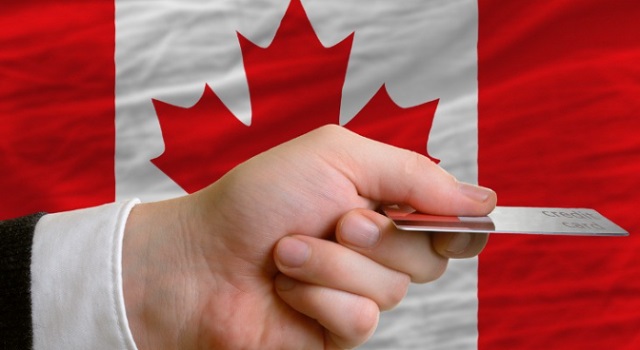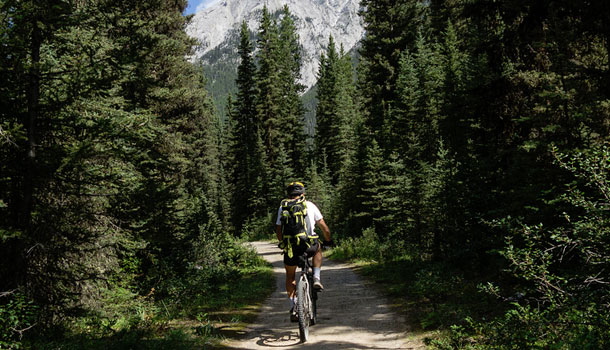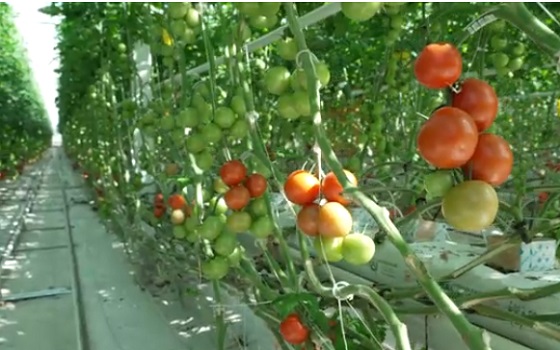Business
Time to cut government fat(cats)!

News release from the Canadian Taxpayers Federation
You’re not just paying for more government bureaucrats than ever.
You’re also paying for more government executives than ever to oversee those bureaucrats as they fail to deliver for you.
The federal government’s c-suite has ballooned by 42 per cent since Prime Minister Justin Trudeau took power. And those executives are paid up to $255,607 every year, on top of the bonuses and benefits they rake in.
And speaking of overpaid government executives…
CBC President Catherine Tait might take a bonus and severance pay out when she leaves the state broadcaster in the new year.
All that and more in this week’s Taxpayer Waste Watch. Enjoy.
Franco.
Time to cut the fat(cats)!
Forget Springfield, Ohio, we’ve got a problem with cats of a different sort in Ottawa – government fat cats.
Everywhere you look – from the Prime Minister’s Office to the Crown corporations to the departments – the cost and size of the bureaucracy is up.
Take the federal c-suite, which has increased by 42 per cent under the watch of Prime Minister Justin Trudeau.
There were 6,414 executives in the federal government when Trudeau took power.
Fast forward to today, and that number has jumped to 9,155.
That means Trudeau isn’t just ballooning the size of government in general, he’s also swelling the ranks of its most expensive bureaucrats.
Records obtained by the Canadian Taxpayers Federation reveal growth among every class of executive under Trudeau.
The salaries for those executives range from $134,827 to $255,607 per year, not including benefits or bonuses.
And you better believe those executives are taking bonuses.
About 90 per cent of federal executives get a bonus each year, according to additional records obtained by the CTF.
In fact, Trudeau dished out $202 million in bonuses in 2022, with the average bonus among executives being $18,252.
All told, compensation for federal executives was $1.95 billion that year, which represented a 41 per cent increase over 2015.
The size of the entire federal bureaucracy has also increased by 42 per cent under Trudeau, with more than 108,000 new bureaucrats added to the taxpayer dole.
Spending on federal bureaucrats hit a record high last year, at $67.4 billion, representing a 68 per cent increase since 2016.
Meanwhile, spending on consultants has also reached a record high, with expenditures for 2023 sitting at $21.6 billion.
So let’s get this straight.
Trudeau ballooned the government c-suite by 42 per cent.
He’s added 108,000 new bureaucrats.
He’s spending 68 per cent more on those bureaucrats, while also dropping more money on outside consultants than any prime minister in Canadian history.
And yet, despite all this new staff, all this outside help, and all this spending, government departments still can’t hit 50 per cent of their performance targets each year.
How is that even possible?
Can someone – anyone – explain what the heck is going on?
Because only one thing is for certain: taxpayers are getting screwed.
CBC President Catherine Tait won’t rule out bonus, severance
The president of everyone’s favourite state broadcaster – Catherine Tait – was back in Ottawa this week to answer questions about CBC bonuses.
During her testimony at the House of Commons Heritage Committee, Tait was asked by Conservative MP Damien Kurek if she would commit to not taking a severance pay out or a bonus when her term at the CBC ends in January 2025.
“I consider that to be a personal matter,” Tait said.
Does that sound like a “personal matter” to you? We certainly don’t think so.
Tait taking a taxpayer-funded bonus or severance pay out, on top of her six-figure, taxpayer-funded salary, is the furthest thing in the world from a “personal matter.”
It’s your money, so you have every right to know.
Canada falls behind on tax competitiveness
The results are in and they’re not good…
The Tax Foundation’s 2024 International Tax Competitiveness Index was released this week. The report compares tax systems for the 38 countries that belong to the Organization for Economic Co-operation and Development.
And the report shows that Canada has fallen behind many of our peers on tax competitiveness.
Canada ranked 17th on overall tax competitiveness, two spots worse than last year.
Canada ranked 31st on individual tax competitiveness.
Canada ranked 26th on business tax competitiveness.
Canada ranked 25th on property tax competitiveness.
The report also noted that Canada’s capital gain tax is “well above” the OECD average.
VIDEO: Here’s why Trudeau’s carbon tax is a scam
The Trudeau government is running a $7-million ad campaign to try to spin Canadians on the carbon tax.
The CTF is fighting back with a campaign of our own.
In the video below, CTF Federal Director Franco Terrazzano refutes Trudeau’s favourite talking points with cold hard facts and explains why the carbon tax is a scam.
Business
Major tax changes in 2026: Report

The Canadian Taxpayers Federation released its annual New Year’s Tax Changes report today to highlight the major tax changes in 2026.
“There’s some good news and bad news for taxpayers in 2026,” said Franco Terrazzano, CTF Federal Director. “The federal government cut income taxes, but it’s hiking payroll taxes. The government cancelled the consumer carbon tax, but it’s hammering Canadian businesses with a higher industrial carbon tax.”
Payroll taxes: The federal government is raising the maximum mandatory Canada Pension Plan and Employment Insurance contributions in 2026. These payroll tax increases will cost a worker up to an additional $262 next year.
For workers making $85,000 or more, federal payroll taxes (CPP and EI tax) will cost $5,770 in 2026. Their employers will also be forced to pay $6,219.
Income tax: The federal government cut the lowest income tax rate from 15 to 14 per cent. This will save the average taxpayer $190 in 2026, according to the Parliamentary Budget Officer.
Carbon taxes: The government cancelled its consumer carbon tax effective April 1, 2025. However, the government still charges carbon taxes through its industrial carbon tax and a hidden carbon tax embedded in fuel regulations.
The industrial carbon tax will increase to $110 per tonne in 2026. While the government hasn’t provided further details on how much the industrial carbon tax will cost Canadians, 70 per cent of Canadians believe businesses pass on most or some of the cost of the tax to consumers, according to a Leger poll.
Alcohol taxes: Federal alcohol taxes are expected to increase by two per cent on April 1, 2026. This alcohol tax hike will cost taxpayers about $41 million in 2026-27, according to industry estimates.
First passed in the 2017 federal budget, the alcohol escalator tax automatically increases excise taxes on beer, wine and spirits every year without a vote in Parliament. Since being imposed, the alcohol escalator tax has cost taxpayers about $1.6 billion, according to industry estimates.
“Canadians pay too much tax because the government wastes too much money,” Terrazzano said. “Canadians are overtaxed and need serious tax cuts to help make life more affordable and our economy more competitive.
“Prime Minister Mark Carney needs to significantly cut spending, provide major tax relief and scrap all carbon taxes.”
You can read the CTF’s New Year’s Tax Changes report here.
Automotive
Politicians should be honest about environmental pros and cons of electric vehicles

From the Fraser Institute
By Annika Segelhorst and Elmira Aliakbari
According to Steven Guilbeault, former environment minister under Justin Trudeau and former member of Prime Minister Carney’s cabinet, “Switching to an electric vehicle is one of the most impactful things Canadians can do to help fight climate change.”
And the Carney government has only paused Trudeau’s electric vehicle (EV) sales mandate to conduct a “review” of the policy, despite industry pressure to scrap the policy altogether.
So clearly, according to policymakers in Ottawa, EVs are essentially “zero emission” and thus good for environment.
But is that true?
Clearly, EVs have some environmental advantages over traditional gasoline-powered vehicles. Unlike cars with engines that directly burn fossil fuels, EVs do not produce tailpipe emissions of pollutants such as nitrogen dioxide and carbon monoxide, and do not release greenhouse gases (GHGs) such as carbon dioxide. These benefits are real. But when you consider the entire lifecycle of an EV, the picture becomes much more complicated.
Unlike traditional gasoline-powered vehicles, battery-powered EVs and plug-in hybrids generate most of their GHG emissions before the vehicles roll off the assembly line. Compared with conventional gas-powered cars, EVs typically require more fossil fuel energy to manufacture, largely because to produce EVs batteries, producers require a variety of mined materials including cobalt, graphite, lithium, manganese and nickel, which all take lots of energy to extract and process. Once these raw materials are mined, processed and transported across often vast distances to manufacturing sites, they must be assembled into battery packs. Consequently, the manufacturing process of an EV—from the initial mining of materials to final assembly—produces twice the quantity of GHGs (on average) as the manufacturing process for a comparable gas-powered car.
Once an EV is on the road, its carbon footprint depends on how the electricity used to charge its battery is generated. According to a report from the Canada Energy Regulator (the federal agency responsible for overseeing oil, gas and electric utilities), in British Columbia, Manitoba, Quebec and Ontario, electricity is largely produced from low- or even zero-carbon sources such as hydro, so EVs in these provinces have a low level of “indirect” emissions.
However, in other provinces—particularly Alberta, Saskatchewan and Nova Scotia—electricity generation is more heavily reliant on fossil fuels such as coal and natural gas, so EVs produce much higher indirect emissions. And according to research from the University of Toronto, in coal-dependent U.S. states such as West Virginia, an EV can emit about 6 per cent more GHG emissions over its entire lifetime—from initial mining, manufacturing and charging to eventual disposal—than a gas-powered vehicle of the same size. This means that in regions with especially coal-dependent energy grids, EVs could impose more climate costs than benefits. Put simply, for an EV to help meaningfully reduce emissions while on the road, its electricity must come from low-carbon electricity sources—something that does not happen in certain areas of Canada and the United States.
Finally, even after an EV is off the road, it continues to produce emissions, mainly because of the battery. EV batteries contain components that are energy-intensive to extract but also notoriously challenging to recycle. While EV battery recycling technologies are still emerging, approximately 5 per cent of lithium-ion batteries, which are commonly used in EVs, are actually recycled worldwide. This means that most new EVs feature batteries with no recycled components—further weakening the environmental benefit of EVs.
So what’s the final analysis? The technology continues to evolve and therefore the calculations will continue to change. But right now, while electric vehicles clearly help reduce tailpipe emissions, they’re not necessarily “zero emission” vehicles. And after you consider the full lifecycle—manufacturing, charging, scrapping—a more accurate picture of their environmental impact comes into view.
-

 COVID-192 days ago
COVID-192 days agoTrump DOJ seeks to quash Pfizer whistleblower’s lawsuit over COVID shots
-

 Alberta2 days ago
Alberta2 days agoAlberta introducing three “all-season resort areas” to provide more summer activities in Alberta’s mountain parks
-

 Agriculture2 days ago
Agriculture2 days agoGrowing Alberta’s fresh food future
-

 International2 days ago
International2 days agoTrump admin wants to help Canadian woman rethink euthanasia, Glenn Beck says
-

 Alberta2 days ago
Alberta2 days agoThe case for expanding Canada’s energy exports
-

 Censorship Industrial Complex2 days ago
Censorship Industrial Complex2 days agoOttawa’s New Hate Law Goes Too Far
-

 Business2 days ago
Business2 days agoFuelled by federalism—America’s economically freest states come out on top
-

 Automotive2 days ago
Automotive2 days agoPoliticians should be honest about environmental pros and cons of electric vehicles








